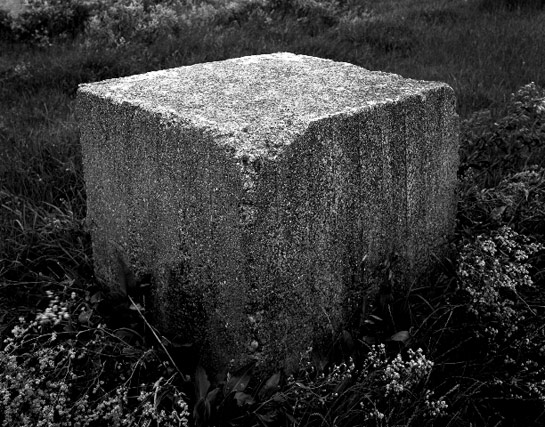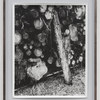A Letter from London: Stuart Bailes and the Solitary Image

Stuart Bailes’ Ruin Value carries a heavy weight. Not unlike Nietzsche’s heaviest weight it will either transform the viewer or crush them; as Bailes himself remarks, “It’s about deciding to understand or not to understand”. To understand what though? To understand infers a finitude, an end to a thought -an end of an idea. Indeed, perhaps the word ‘understand’ is not quite right, or perhaps it needs to be preceded by words such as ‘endeavouring to’: It’s about endeavouring to understand or not to understand. We arrive then at an act of sorts, something that does not have an end as such. Again, like Nietzsche’s burden, we are compelled to return eternally to the image, to the question it poses, never understanding, but forever lingering in its indeterminate proposition. (more)
It is impossible to resolve specifically what Bailes’ images are doing, what their schema is, and this is precisely where their significance lies. They have no agenda, they have no determined goal, they exist only as prompts; prompts to maintain and intensify the thoughts of the artist -the weight of the artist.
The singular image in photography, like Bailes’ unaccompanied works Ruin Value, The Empiricist or The Informants, can, by virtue of being seemingly infinite (there is no visible end unlike the linear inevitability of a photographic project) exist for much longer; the images can continually prevail in their eternally recurrent action. In this sense the singular image is always open, liberated by its own unhindered sovereignty. There is neither beginning nor end in the lone image, it appears free from precise conceptual agendas, and progresses in an action that does not move linearly towards a destined understanding, but exists recurrently in a continual evolution of understanding. For this reason, we arrive at an understanding of Bailes’ images in not understanding them, but forever endeavouring to understand them.
Consequently, it then becomes harmful for the viewer to decide to understand, and say: “Ah, The Empiricist, it is about the limits of understanding through visual analysis alone”. If this is the thought, the vital function of the image has been overlooked, and the work digresses back into an isolated picture lost amongst its sequenced others. The viewer has missed their chance to take the artist’s thought, to take a measure of the artist’s weight, and allow it to provoke a sometimes-disconcerting but necessary process within themselves.
The totality that is Bailes’ pictures and their titles -their indivisibility into two separate elements- is the success of the work. There exists in Bailes’ singular images a duality of simplicity that results in a complex mechanism for extended thought. The viewer is provoked to linger in the presence of these images as there subsists in them an ambiguity of both title and image that resists definition; that resists an appropriation of its content into mere information. It is Bailes’ concern to do away with information that can be catalogued and stored, information that stunts thought with its pretence to being understood. The Empiricist asks, “How much information is enough?” Bailes’ entire oeuvre asks, “How can I refuse information and resist understanding?”
~Christopher Thomas (cmlthomas88@yahoo.co.uk)
Stuart Bailes’ solo exhibition is showing at Edel Assanti Gallery until 2nd June, 2012


